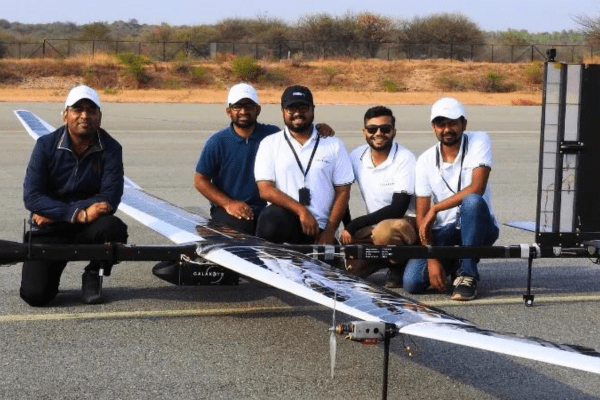Bengaluru-based space tech startup GalaxEye has successfully tested its all-weather, all-time prolonged aerial surveillance technology. This technology could enhance India’s defense capabilities.
GalaxEye’s CEO, Suyash Singh, said that the company tested its synthetic aperture radar (SAR) technology. They conducted the test using a subscale high-altitude pseudo-satellite (HAPS) developed by the National Aerospace Laboratories (NAL).
HAPS are high-flying drones that operate in the stratosphere, offering extended aerial surveillance. Using solar energy and advanced batteries, these platforms can stay aloft for long periods.
“At the stratosphere, SAR is a technology for all-weather, all-time imaging overcoming the challenge of cloud cover, which restricts traditional electro-optical cameras,” Singh said.
SAR technology has potential beyond defense, including environmental monitoring and disaster management. An NAL spokesperson stated that while initial tests are promising, further tests are needed before practical deployment.
“There is a platform between satellite and drones, which flies at an altitude of 18 to 20 km, which was also recently tested by some of the companies such as NAL and NewSpace (aerospace and defence R&D company), which is where we tested our SAR on HAPS quite successfully,” Singh said.
HAPS hover at an altitude of 18 km, providing long-duration surveillance and monitoring, beneficial for national security, defense, and disaster management, such as flood response. NAL provided the platform for sensor testing.
Regarding investment, Singh mentioned that SAR technology requires 50%-60% of the cost of satellite-based SAR, without revealing exact figures.
“For domestic purposes, it can be used to monitor the state’s agriculture, other economic activities and disasters. One of the primary users of this technology will be the government. We have had a range of discussions with different people. The government would want to look at it more seriously when they get to know that we’ve tested it on a subscale prototype level. There is interest but at an early stage today,” he said.
Aircraft typically fly at three to eight km altitude and can stay aloft for two to three hours. In contrast, HAPS can remain at the same spot for seven days, using solar power during the day and batteries at night. HAPS can only carry small, lightweight payloads. The SAR was miniaturized to less than 10 kg.


